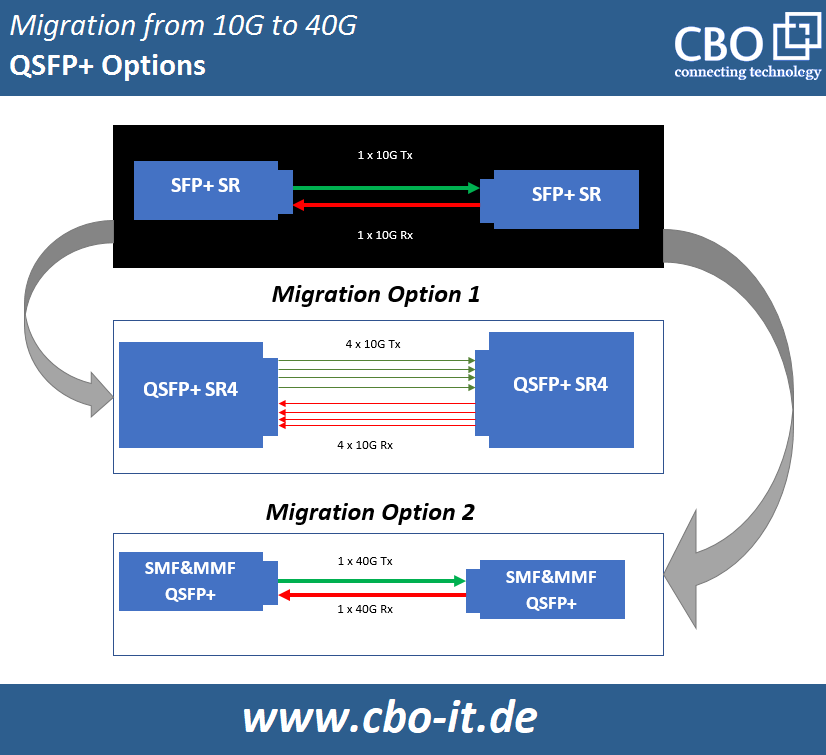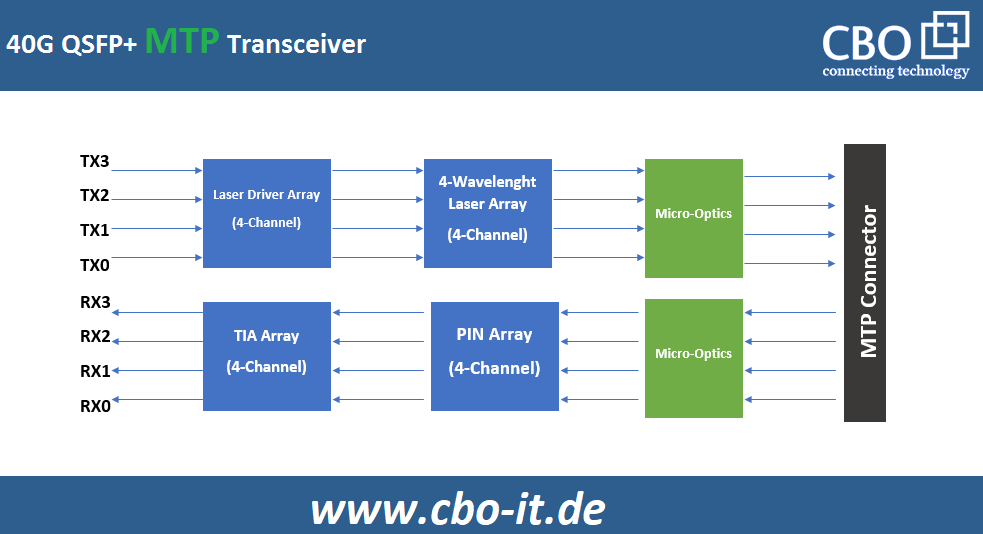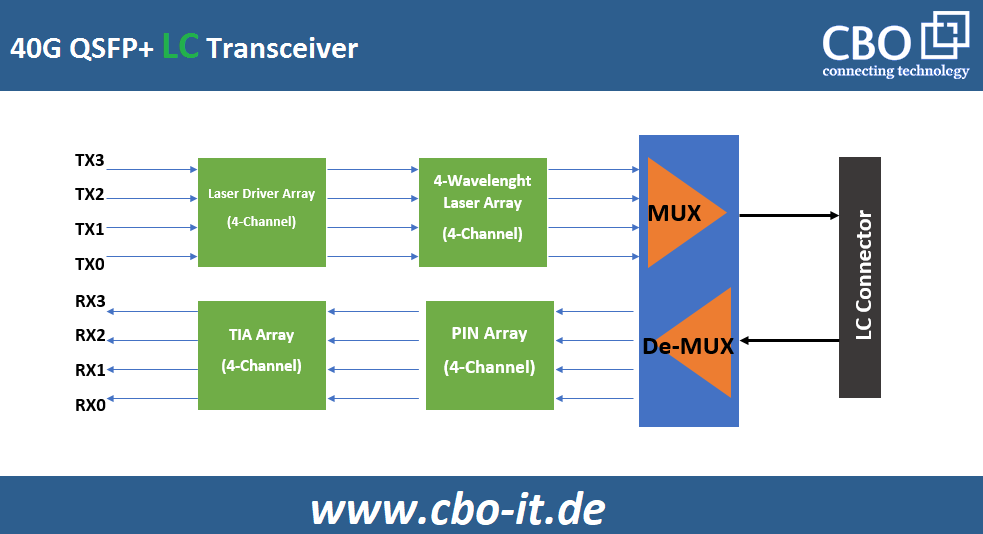Los módulos ópticos (transceptores) se encargan del intercambio de datos en las redes de telecomunicaciones. La principal tarea de los transceptores es convertir las señales eléctricas en señales ópticas para la posterior transmisión de información a través de una línea de comunicación de fibra óptica (FOCL).
El módulo óptico QSFP 40G es un producto basado en QSFP diseñado para aplicaciones de alta densidad. En comparación con los módulos ópticos SFP + estándar, la densidad de puertos es mayor y el coste total del sistema es menor. Dispone de cuatro canales de transmisión de datos, y la velocidad de transmisión de cada canal es de unos 10 Gbps. La transmisión simultánea de cuatro canales puede alcanzar una velocidad de transmisión de 40 Gbps.
Los transceptores de red se utilizan para minimizar la latencia del tráfico y proporcionar un alto rendimiento. La necesidad de resolver estos problemas surge a menudo en grandes centros de datos y redes informáticas de alto rendimiento. QSFP está demostrando ser muy útil para los operadores que desean actualizar sus redes 10G existentes a 40G y más allá. La siguiente ilustración muestra dos posibles opciones para actualizar de SFP+ a QSFP.

BENEFITS OF 40G QSFP OPTICAL MODULES
- Providing optical and electrical interface at a speed of 40 Gbps;
- High-speed optical QSFP modules have increased port density - this figure has grown by 3-4 times compared to previous generations
- The length of the communication line of the QSFP transceiver reaches 40 km, which is four times longer than that of its predecessors (previous modifications could give no more than 10 km)
- Hot-swap support - a unique feature that allows you to replace an optical module without necessarily shutting down or rebooting the equipment
- Online monitoring is carried out using DDM - a unique function that allows you to control the power of the incoming (Rx) and outgoing (Tx) channels, including temperature indicators during the operation of the transceiver
- Affordable price of QSFP modules - the cost is justified by the device's capabilities.
QSFP Transceivers by Connector Type
QSFP MTP Transceivers
On the transmit end, 40G QSFP MTP modules use a laser array to convert electrical signals into optical signals. The conversion of the parallel optical signal into parallel electrical signals is done through a photodetector array on the receiving end. Then, these parallel optical signals are transmitted via MTP parallel cable.

40G QSFP LC Transceivers
Four streams of 10G serial data are passed to laser drivers on the transmit side in these transceivers. The laser divers regulate directly modulated lasers (DMLs). Then the output from the four DMLs is multiplexed onto a fiber cable via LC connector, and it is transmitted as a single, 40G optical signal. Each wavelength of light is received by a PIN and then forwarded as an electrical signal on the receiving end. A transimpedance amplifier or TIA then amplifies the received electrical signals. Unlike MTP QSFP transceivers, LC QSFP transceivers cannot be used in applications where splitting of 40G signal into 4 x 10G signals because they use four different wavelengths on a single pair of SMFs.

THE MAIN TYPES OF QSFP MODULES
High-speed 40G QSFP modules are produced in various types, including;
- QSFP SR2 (BiDi)
This model differs from the usual 40G module as it utilizes two wavelengths simultaneously for data transmission. QSFP BiDi optical modules require MMF and can achieve a maximum transmission rate of 20Gbps per channel. This type of transceiver uses 800/950 nm wavelength for transmission.
- QSFP PSM4
The device can split 40G into 4 x 10G, transmitting the signal over a distance of up to 10 km. The transceiver is equipped with four lasers with a wavelength of 1310 nm, as well as an MPO / APC connector (an 8xLC cable is used for splitting into 10G)
- QSFP ER4
The module wavelength ranges from 1270 to 1330 nm. For a 40G channel, you will have to organize two single-mode optical fibers. In this case, the use of QSFP + ER4 will cost significantly more than installing four 10G channels. If you use 10G SFP + modules, then one fiber will be enough to provide high-speed communication
- QSFP-DD
This unusual solution was created in order to maintain backward compatibility - the QSFP-DD ports are designed to work with the usual QSFP28. The model is equipped with an extended platform with an additional row of contacts, which can work with eight channels. Actually, because of these characteristics, the device was named Double Density.
Conclusion
The availability of 40G QSFP + optical modules in various types makes its integration easier for network operators. 40G QSFP+ is a viable intermediate solution for those planning to upgrade their existing 1G and 10G networks to 40G and beyond. Different versions of these transceivers are available for SMF and MMF.
 Espaniol
Espaniol
 Deutsch
Deutsch
 English
English










